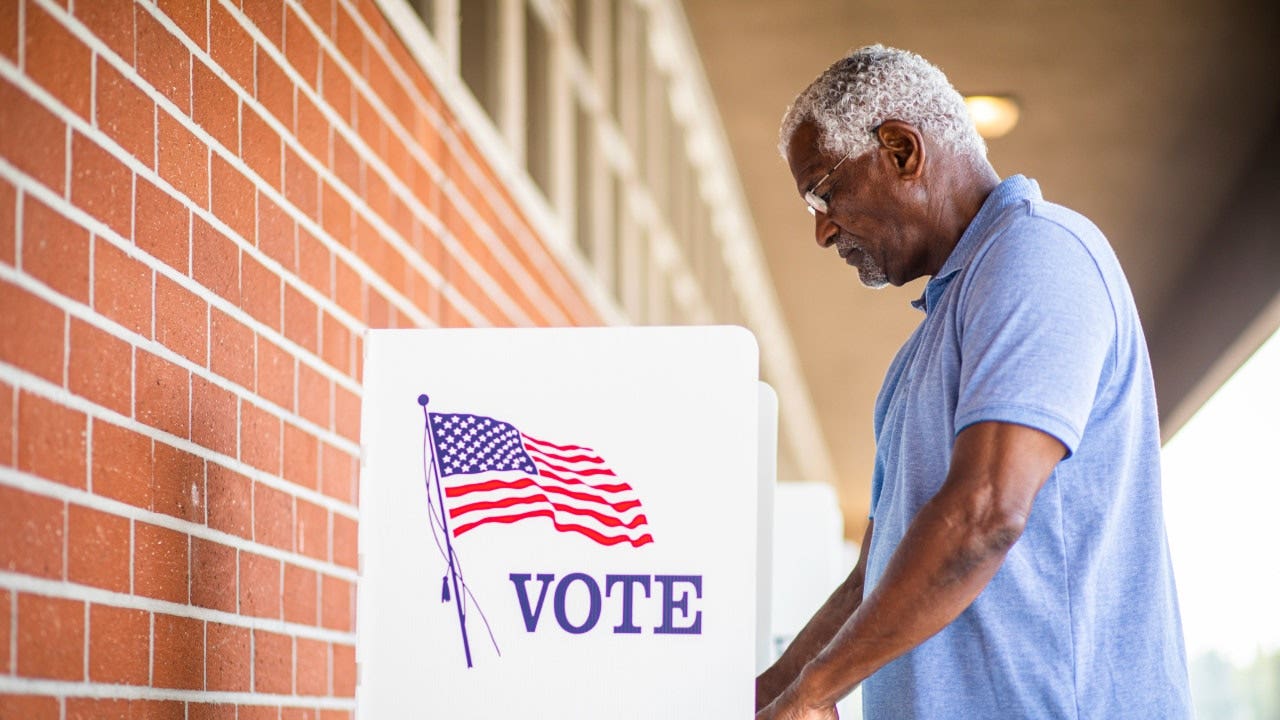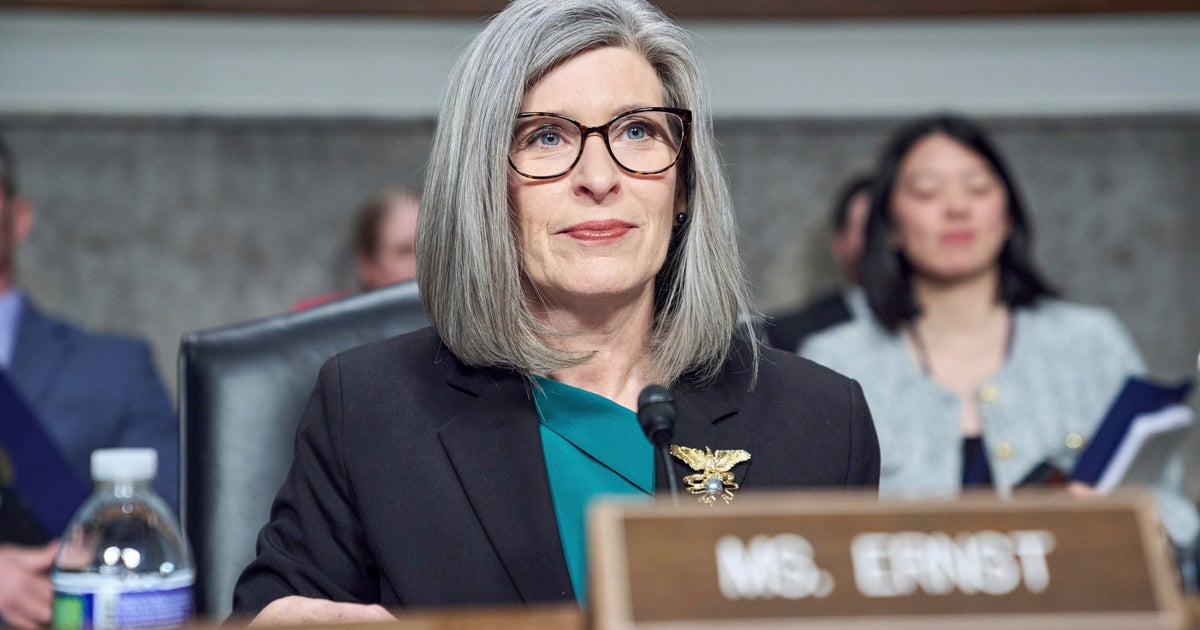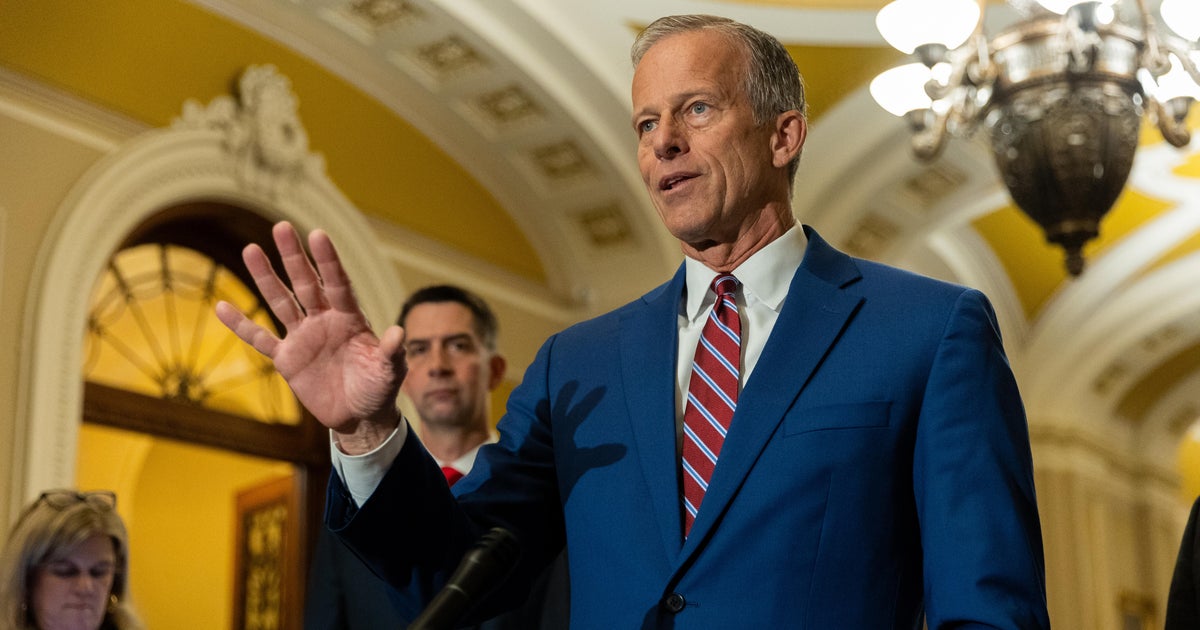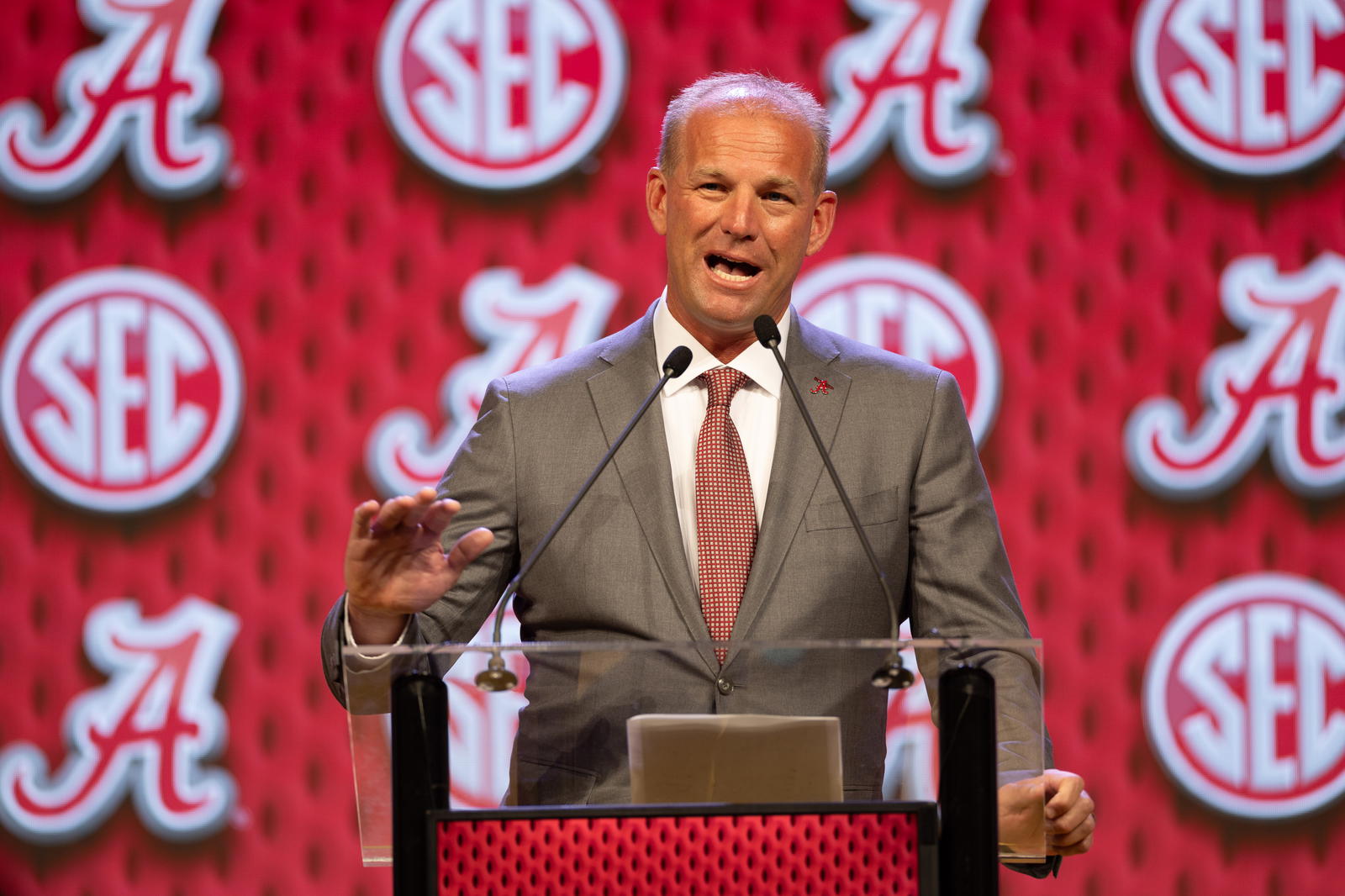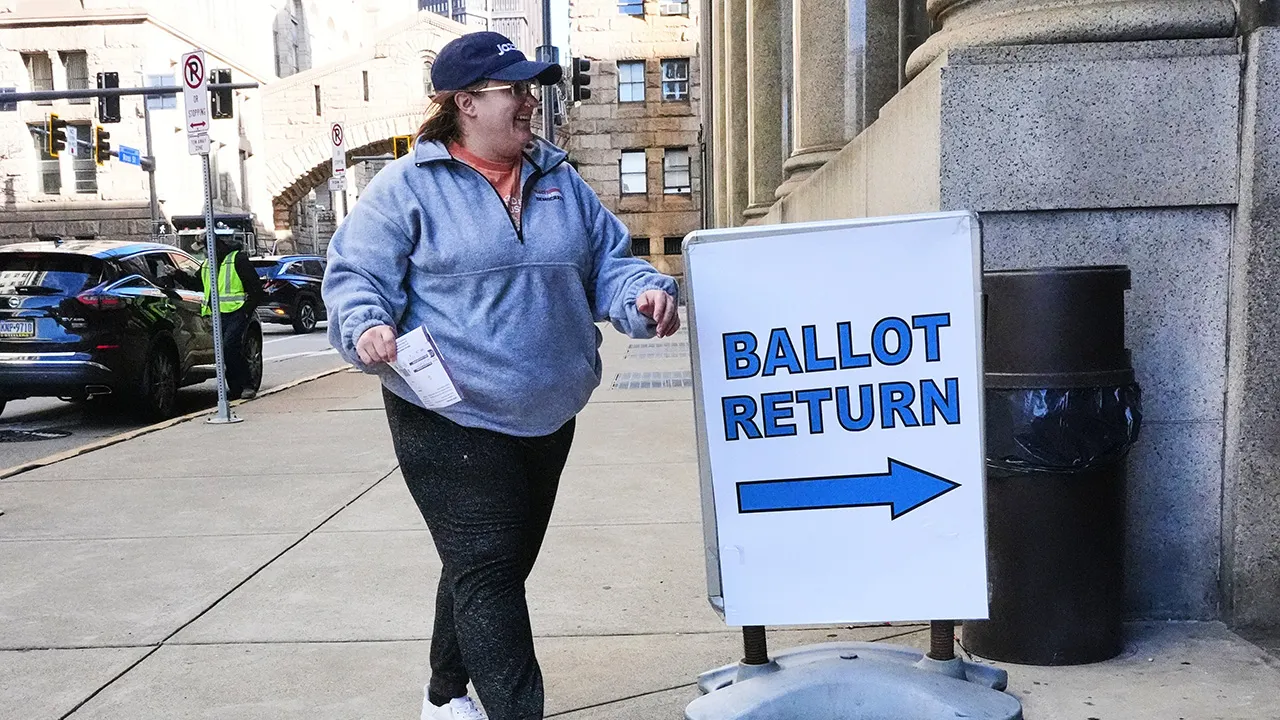Connecticut
Connecticut Election Day 2024: Here's what to know

The 2024 presidential election is Tuesday, Nov. 5. Connecticut voters will cast ballots in federal and state races.
Democratic Vice President Kamala Harris faces Republican Donald Trump for the state’s seven electoral votes.
In Connecticut’s 5th Congressional District, incumbent Rep. Jahana Hayes, a Democrat, again faces GOP challenger George Logan. There are also various down-ticket races for state legislative seats, as well as a ballot question on whether or not to change the state constitution to allow no-excuse absentee voting by mail.
Election Day 2024 is notable in Connecticut for one more reason: It marks the state’s first time offering early voting during a presidential election. Early voting kicks off on Oct. 21 and runs through Nov. 3.
Here are the key dates, voting information and races you need to know about.
Key dates
How do I register to vote?
Can I register and vote on Election Day?
What is early voting and how can I do it?
Where do I vote?
Do I need to show photo identification to vote?
I am or have been incarcerated. Am I eligible to vote?
What are some of the key races?
Learn more
Key dates
Oct. 18 – Deadline to register in person, via mail or online, for early voting, as well as voting on Election Day.
Oct. 21 – Early voting begins. Unregistered voters may also register to vote in person every day
of early voting at the early voting location.
Nov. 3 – Early voting ends.
Nov 4 – Deadline to request an absentee ballot. Deadline for a voter to return, in-person, an absentee ballot to the Town Clerk’s office.
Nov. 5 – Election Day (polls open 6 a.m. to 8 p.m.) Deadline to return an absentee ballot by mail or to a drop box by close of polls.
How do I register to vote?
The cut off for voters to register to vote in person, via mail, or online is Oct. 18. There is same day registration available each day of the early voting period, and on Election Day.
Can I register and vote on Election Day?
Yes. You may register and vote in person on Election Day at a designated location in your town. That’s usually Town Hall, but check with your local registrars’ office.
You must meet eligibility requirements for voting in Connecticut and not already be registered. If you are registered in one town, but recently moved, you can register on Election Day to vote in your new town.
What is early voting and how can I do it?
Early voting is exactly what it sounds like: It’s a chance for registered voters to cast a ballot before Election Day. After voters seal their choices in an envelope, ballots will be secured, unopened, until Election Day.
Early voting is different from voting by absentee ballot, which requires a reason. Early voting is available to all eligible voters, provided they cast their ballots during the early voting period.
Early voting is open from Oct. 21 through Nov. 3 (10 a.m. to 6 p.m.) at the designated early voting location in each town. There are extended early voting hours on Oct. 29 and Oct. 31 (8 a.m. to 8 p.m.).
Connecticut is one of the last states in the nation to offer early in-person voting. Early voting first rolled out in March to minimal turnout during the presidential preference primary. That low turnout raised concerns among some local officials, who said the law was underfunded and overly taxing for many part-time town officials. Early voting had a second go-around in August, to varying degrees of success. In Hamden, turnout was relatively high, but officials have said November will be the true test of the new state law.
Secretary of the State Stephanie Thomas signaled this summer she is open to working with the legislature to adjust the law, but said she wants to see how many early voters turn out during the November election before any changes are made. Early voting was approved by the state legislature in 2023.
Where do I vote?
Early voting: Early voting locations will be listed by town as they become available. (Each town in Connecticut will have at least one early voting location, state officials say. Towns with more than 20,000 residents may have additional locations.)
Election Day: Registered voters can also look up their Election Day polling place.
Do I need to show photo identification to vote?
No. Instead of presenting ID, voters can, in most cases, sign an affidavit when poll workers ask for ID. The identification does not need to be a driver’s license. It also does not need to have a photo. Here is a detailed list of Connecticut’s in-person voter ID requirements.
I am or have been incarcerated. Am I eligible to vote?
Possibly. Eligibility depends on the nature of the crime and your current confinement status.
You are eligible to vote if:
- You have been convicted of a misdemeanor and are currently confined (via absentee ballot).
- You are in pretrial detention and have not been convicted of any crime (via absentee ballot).
- You are convicted of a felony and have completed your confinement.
- You are convicted of a felony and are currently on only parole or probation.
- You are convicted of election statute felonies and have completed confinement and parole/probation.
You are not eligible to register to vote or vote if:
- You have been convicted of a felony and are currently confined.
Note: To restore voting rights after confinement, you must register to vote, even if previously registered, according to the Secretary of the State’s office.
What are some of the key races?
After tight 2022 race, Logan again seeks to unseat Hayes
Incumbent U.S. Rep. Jahana Hayes, first elected to Congress in 2018, faces off against GOP challenger George Logan in Connecticut’s 5th Congressional District.
Hayes, 51, is a former National Teacher of the Year who has closely aligned herself with the progressive policies of the House Democrats during her time in Congress. She has touted her work on lowering the price of prescription drugs and improving care for military veterans as part of her 2024 campaign.
Logan, an engineer and former state senator, waged an unsuccessful, but competitive 2022 race against Hayes, losing by less than one percentage point. If elected, Logan would be the first Republican sent to Congress from deep-blue Connecticut since 2008 when Chris Shays lost to challenger Jim Himes.
Connecticut’s 5th District has been in Democratic control since 2006 when Republican Nancy Johnson lost to Chris Murphy, who later successfully ran for U.S. Senate.
Murphy faces GOP challenger for U.S Senate seat
Democratic incumbent U.S. Sen. Chris Murphy faces a challenge from GOP challenger Matthew Corey.
(Murphy was first elected to the Senate in 2012. His 2012 rise followed a Democratic primary featuring a cast of Connecticut politicians including future Lt. Gov. Susan Bysiewicz and Attorney General William Tong, then a state representative. Murphy ultimately went on to defeat GOP candidate Linda McMahon, the former WWE CEO and performer. McMahon would later land a spot as administrator of the Small Business Administration under former President Donald Trump.)
In many ways, Murphy’s time in Congress has been defined by the mass shooting at Sandy Hook Elementary School in 2012. Since then, he has emerged as a national voice advocating for stricter gun control laws. He also speaks regularly on loneliness and is a member of the Senate’s Appropriations and Foreign Relations committees.
Corey, a Manchester resident and Navy veteran, is a small business owner. He ran unsuccessfully against Murphy in 2018. Corey faces an uphill battle again this year, as Murphy has already amassed a massive fundraising advantage.
CT voters face question to expand ballot access in future elections
A ballot question will also appear this November. The question will ask voters to amend the state constitution to allow for no-excuse voting by mail. Currently, state law requires voters to give a reason when requesting an absentee ballot, such as sickness or absence from town on Election Day.
If approved, this change would allow the legislature to vote on legislation to expand mail-in voting to all voters, according to the Connecticut Mirror. Many states allow no-excuse absentee voting.
If the measure fails, as a similar effort did in 2014, the legislature would not be permitted to vote to change the rules around no-excuse absentee voting. Instead, a question allowing the constitutional change would again need to be put before voters during a future election.
Other U.S. House seats also up for reelection in 2024
District 1
U.S. Rep. John Larson, a Democrat first elected to Congress in 1998, faces challenger Jim Griffin. Griffin was endorsed by Republicans without opposition in May.
District 2
U.S. Rep. Joe Courtney, a Democrat who has represented the district since 2007, faces Mike France, a Republican and former Connecticut state representative who waged an unsuccessful campaign against Courtney in 2022.
District 3
Democratic U.S. Rep. Rosa DeLauro, 81, who has represented the district since 1991 and has been re-elected ever since. DeLauro faces Republican Michael Massey, a New Haven resident.
District 4
U.S. Rep. Jim Himes, a Democrat who has held the district since 2009, faces Republican challenger Michael Goldstein, an ophthalmologist and lawyer.
Learn more
Connecticut Secretary of the State | Register Online to Vote | Important Voter Information

Connecticut
Opinion: Housing vouchers are CT’s strongest housing policy, and best tool vs. Washington dysfunction

While much has been shared about the disastrous consequences of Gov. Ned Lamont’s veto of the housing omnibus bill, H.B. 5002 (see here, here, here, and here for some highlights), there is one area of housing policy where Connecticut is leading the charge: housing vouchers.
Connecticut is one of only a handful of states to have their own state-funded housing voucher program. While most of the country relies solely on the distribution of federal Section 8 housing vouchers (which only one in every four eligible households can access due to underfunding), for the past four decades Connecticut has stepped up to expand rental assistance to our most vulnerable populations through our Rental Assistance Program (RAP). The program is still going strong: in the most recent budget, the General Assembly approved $6.7 million in Fiscal Year 27 to create more than 400 new vouchers. We have a history of taking care of our people when federal dollars fall short.
Now, with federal funding more uncertain than ever, Connecticut is one of the best poised states to step in and step up to keep our families in their homes. As the Trump Administration has threatened housing stability for voucher recipients — through the government shut down, drastic proposed budget cuts, and new proposed work requirements — Connecticut doesn’t need to scramble to implement new emergency programs. We can build out our existing infrastructure to provide a safety net for the casualties of this administration’s cruelty.
What exactly is the Rental Assistance Program? It helps very low-income families afford safe, decent housing in the private market. Participants locate a private rental home — from apartments to single family homes — and arrange for the landlord to accept rental assistance payments. Rental assistance is a subsidy, not a free ride. Families making up to 50% of Area Median Income, or between $35K-$43K for a three-person household, will pay up to 40% of their monthly income in rent (30% for elderly and disabled tenants) and the state makes up the difference between what the family can afford and what the private market charges. (See pschousing.org for an explainer on the differences between federal and state housing vouchers.)
When it comes to housing, other states face a difficult choice: let their residents face eviction and homelessness, or build the plane as they fly it by creating new programs, funding streams, and bureaucracies while in crisis.
Connecticut is prepared and doesn’t need to face this impossible choice. It’s simple: mobilize and fund our existing Rental Assistance Program to keep families safe and stably housed.
Our most urgent first step is to mitigate the impacts of the government shutdown. Current funding for Section 8 vouchers is estimated to last until the end of November – then public housing authorities are on their own. The governor and General Assembly can lead in their upcoming special session by providing funding for the Department of Housing to cover the gaps.
An eviction can follow a family and make it impossible for them to find housing for years to come. Evictions as a result of the federal government reneging on their rental agreement are deeply unfair to voucher holders who have consistently paid 30% of their income in rent. It would be a mistake to allow a wave of evictions and homelessness to move forward during a temporary shutdown when we have the tools and the funds to step in.
Connecticut’s policymakers can plan ahead for how to best deploy our Rental Assistance Program to mitigate a future housing crisis from Washington:
Connecticut has the opportunity to be a housing leader. No one deserves to be evicted because of dysfunctional federal policies, and we can and should stand up for our neighbors. We urge our state leaders to not forget their most powerful tool in this fight — state housing vouchers.
Alysha Gardner of New Haven is senior policy analyst for Hartford-based Partnership for Strong Communities.
Connecticut
CT election night recap: Democrats win big, mirroring national results

Democrats won big in Tuesday’s municipal elections in Connecticut, holding on to mayoral offices in Stamford, New Haven and Danbury and knocking out incumbent Republicans in Ansonia and Stratford, according to unofficial vote tallies.
The results came amid other Democratic wins elsewhere in the country.
In New York City’s closely-watched mayor’s race, Zohran Mamdani beat former New York Gov. Andrew Cuomo, who ran as an independent, and Republican Curtis Sliwa. In California, Democrats passed a gerrymandering proposition that would allow them to carve out additional blue seats.
Here’s a look at where some Connecticut’s key municipal races stand Wednesday morning:
Democratic incumbents in Stamford, Danbury and New Haven each fended off Republican mayoral challengers Tuesday night.
Voters also granted a second term to Danbury Mayor Roberto Alves, who scored a win over Republican Emile G Buzaid with 59.06% of the vote.
In New Haven, incumbent Mayor Justin Elicker handily defeated Republican Steven Orosco, a former MMA fighter, with 77.43% of the vote. The win continues Democrats’ control of the city that dates to the Eisenhower administration.
A handful of races remained either too close to call Wednesday morning or lacked results.
In Easton, the secretary of the state’s unofficial results showed Republican Dan Lent leading Democrat Nicholas D’Addario by just six votes in the race for the first selectman’s office.
In East Hartford, where Republican Salema Davis and Connor Martin are vying for the mayor’s office, no results have been reported, according to the secretary of the state.
Tuesday night saw a few upsets with incumbents knocked from their seats.
In Ansonia, Republican Mayor David S. Cassetti lost to Democrat Frank Tyszka, who secured 57.96% of the vote.
In Stratford, incumbent Republican Laura R. Hoydick lost to Democrat David Chess.
Neighboring Milford also saw a Republican incumbent defeated by a Democrat, with voters backing Rich Smith over the incumbent, Tony Giannattasio.
Connecticut
CT lawmakers plan special session as families worry about SNAP, other federal aid

As the federal government shutdown rolls into its second month, questions mount for people relying on a range of federally-funded benefits.
Connecticut lawmakers are negotiating the parameters of a bill to set aside as much as $500 million to help households relying on various assistance programs and subsidies.
“Right now, my number one priority on a timely basis is taking care of people who were hit and hit hard by this shutdown,” Gov. Ned Lamont (D-Connecticut) said during a press conference at Hands on Hartford.
There’s bipartisan support for a response to several concerns over federal funding, including:
- The U.S. Department of Agriculture is paying for half the monthly benefits in November, leaving questions about when those payments will come and what might happen if the shutdown continues into December.
- The shutdown continues as Democrats and Republicans disagree over the future of subsidies for people who buy health insurance through Affordable Care Act exchanges.
- And stats have not received money from the Low-Income Heating Energy Assistance Program, or LIHEAP, because Congress has not approved a spending plan.
Democratic and Republican leaders have said the goal is to put money aside in case federal funding for specific benefits are cut or frozen.
The intent is to make sure benefits continue through early February, when lawmakers return to the capitol. There is debate about whether the money should come from the Rainy Day Fund or a surplus within the existing budget.
Either way, lawmakers said they want to help families relying on programs like SNAP.
“I think we should have started figuring it out two weeks ago because there were some people who were optimistic,” Rep. Vincent Candelora (R-Minority Leader) said. “I just don’t see the shutdown ending anytime soon.”
That could include making sure households receive their full benefit and setting aside money in case the shutdown drags on and the USDA fails to fund the program again in December.
Lamont said Monday that Connecticut could copy what states like Vermont, Virginia and Utah have done, putting money onto the EBT cards SNAP beneficiaries already have.
“It was a bouncing ball there for a while, we have a pretty good idea now,” he said. “We will be able to use the EBT card. We can potentially do cash on that if this thing goes a lot longer.”
The state did give $3 million to Foodshare last week, helping the organization purchase six million additional meals.
Those meals will be distributed over the next two weeks through Foodshare’s existing network, starting Monday.
Janet Bermudez, executive director of Hands on Hartford, said families coming to her pantry are looking everywhere they can for help after not receiving benefits on Saturday.
“Folks that are not receiving their SNAP benefits are becoming anxious, desperate,” she said, estimating the pantry saw a 20% increase in demand even before Saturday.
She said families, and not just those on SNAP, have been asking for more help as they also pay more for electricity, housing and other costs.
Bermudez said that’s one of the reasons pantries alone can’t make up for the assistance families are losing through SNAP.
“What we’re able to give out is about 40 pounds of groceries, and that, I know, does not feed a family for a month,” she said.
-

 Milwaukee, WI1 week ago
Milwaukee, WI1 week agoLongtime anchor Shannon Sims is leaving Milwaukee’s WTMJ-TV (Channel 4)
-

 News1 week ago
News1 week agoWith food stamps set to dry up Nov. 1, SNAP recipients say they fear what’s next
-

 Culture1 week ago
Culture1 week agoVideo: Dissecting Three Stephen King Adaptations
-

 Seattle, WA4 days ago
Seattle, WA4 days agoESPN scoop adds another intriguing name to Seahawks chatter before NFL trade deadline
-

 Seattle, WA1 week ago
Seattle, WA1 week agoFOX 13’s Aaron Levine wins back-to-back Jeopardy! episodes
-

 San Diego, CA1 week ago
San Diego, CA1 week agoAdd Nick Hundley, Ruben Niebla to list of Padres’ managerial finalists
-

 Education1 week ago
Education1 week agoOpinion | New York City Mayoral Candidates: Who Would Be Best?
-

 Business6 days ago
Business6 days agoCommentary: Meme stocks are still with us, offering new temptations for novice and unwary investors
